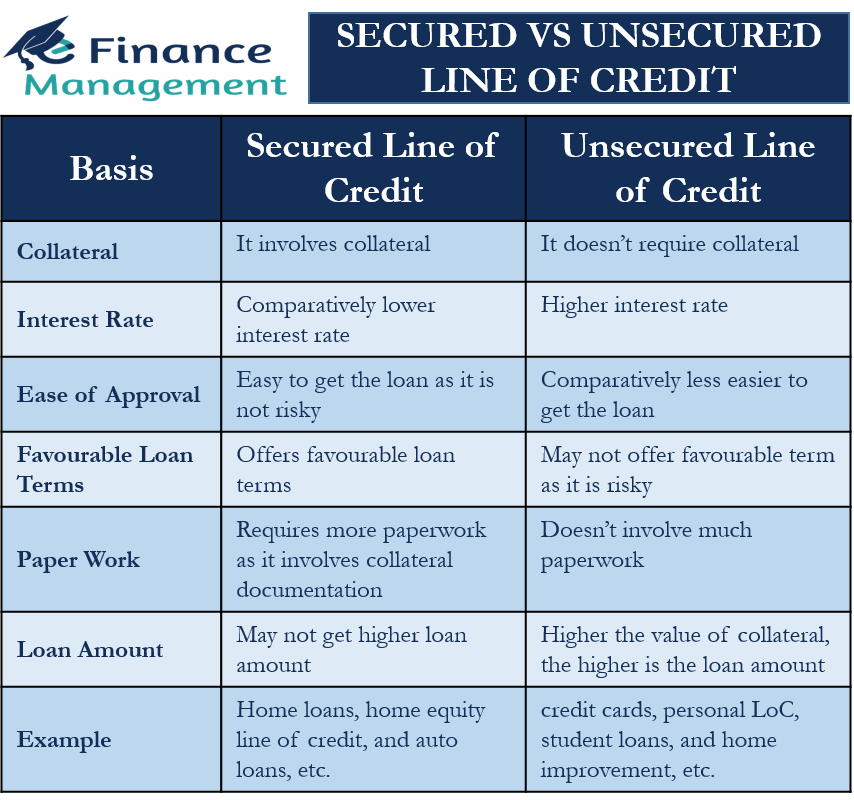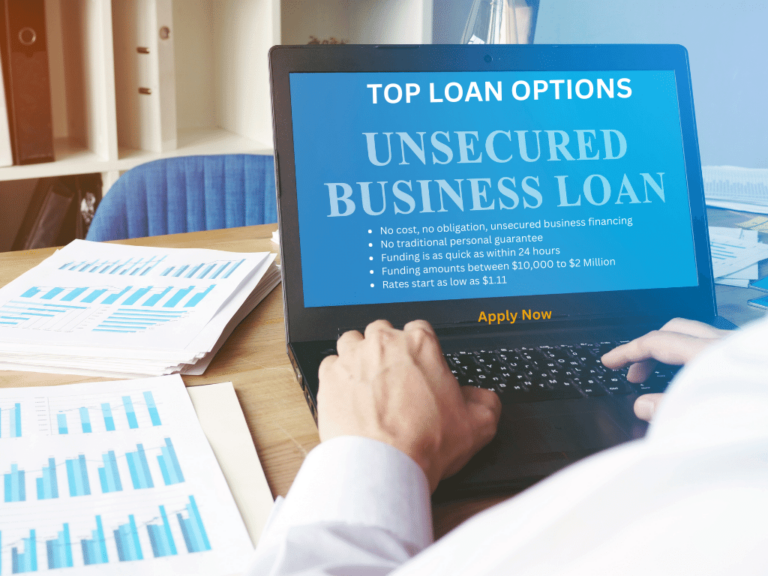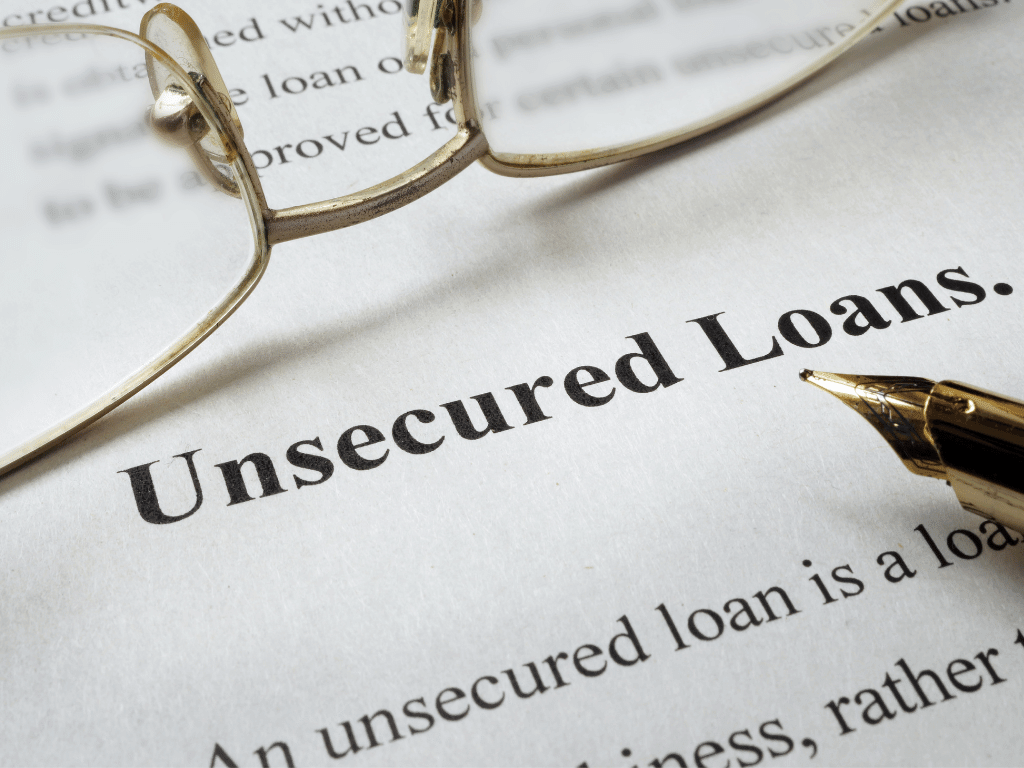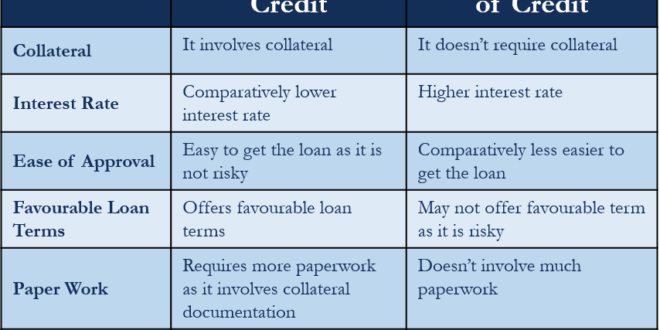What is an unsecured business line of credit? It’s a financial tool that can be a lifeline for growing businesses. Unlike a traditional loan, a line of credit offers a flexible way to access funds as needed, providing a safety net for unexpected expenses or opportunities. This article will delve into the ins and outs of unsecured business lines of credit, exploring their advantages, disadvantages, and the factors that influence eligibility.
Imagine a revolving credit card, but for your business. That’s the essence of a business line of credit. It provides a pre-approved amount of funds that you can draw upon whenever you need, and repay as you go. This flexibility makes it a popular choice for businesses looking to manage cash flow, fund short-term projects, or seize unexpected opportunities.
What is a Business Line of Credit?

A business line of credit is a revolving credit facility that allows businesses to borrow money as needed, up to a predetermined limit. It operates like a credit card for businesses, offering flexibility and convenience in managing cash flow.
Purpose and Functionality
A business line of credit provides a readily accessible source of funds for short-term financial needs. Unlike a traditional loan, where the entire amount is disbursed upfront, a line of credit allows businesses to draw funds only when necessary, paying interest only on the amount borrowed. This flexibility makes it a valuable tool for managing cash flow, covering unexpected expenses, and funding seasonal business fluctuations.
Comparison with Other Forms of Business Financing
- Loans: Loans provide a fixed sum of money upfront, with a predetermined repayment schedule. They are suitable for large, one-time investments, but lack the flexibility of a line of credit.
- Equity Financing: Equity financing involves selling ownership in the business to investors in exchange for capital. It provides long-term funding but dilutes ownership and requires significant due diligence.
Examples of Business Line of Credit Utilization
- Seasonal Business Fluctuations: Retailers often utilize lines of credit to manage inventory purchases during peak seasons, ensuring sufficient stock without tying up valuable working capital.
- Unexpected Expenses: Businesses can leverage lines of credit to cover unforeseen costs, such as emergency repairs, legal fees, or marketing campaigns.
- Growth Initiatives: Lines of credit can be used to fund expansion projects, new product launches, or acquisitions, providing short-term financing while the business generates revenue from these initiatives.
Unsecured Business Lines of Credit
An unsecured business line of credit is a type of financing that allows businesses to borrow money without providing any collateral. This means that the lender is relying on the business’s creditworthiness and ability to repay the loan, rather than on any specific assets.
Characteristics of Unsecured Business Lines of Credit
The defining characteristic of an unsecured business line of credit is the absence of collateral. This means that the lender is not secured by any specific assets, such as real estate, equipment, or inventory. Instead, the lender is relying on the borrower’s creditworthiness, which is assessed based on factors such as their financial history, revenue, and debt-to-equity ratio.
Factors Considered by Lenders
Lenders consider various factors when evaluating the creditworthiness of businesses seeking unsecured lines of credit. These factors include:
- Credit History: Lenders review the business’s credit score and history, including past loan repayments, payment history, and any outstanding debts. A strong credit history indicates a higher likelihood of repayment, making the business more attractive to lenders.
- Financial Performance: Lenders examine the business’s financial statements, such as income statements, balance sheets, and cash flow statements, to assess its financial health and profitability. They look for indicators of consistent revenue, strong cash flow, and manageable debt levels.
- Business Plan: A well-structured business plan outlining the business’s future goals, strategies, and projections can provide lenders with confidence in the business’s ability to repay the loan. This plan should demonstrate a clear understanding of the market, competition, and the business’s potential for growth.
- Management Team: Lenders assess the experience, qualifications, and track record of the business’s management team. A strong management team with proven leadership skills and industry expertise increases the lender’s confidence in the business’s ability to succeed.
- Industry and Market Conditions: Lenders consider the overall health and growth potential of the industry in which the business operates. They may also evaluate the business’s market share, competitive landscape, and potential for future growth.
Advantages of Unsecured Business Lines of Credit
Unsecured business lines of credit offer several advantages:
- Flexibility: Businesses can access funds as needed, without having to go through a lengthy application process each time. This flexibility allows businesses to take advantage of unexpected opportunities or address unforeseen expenses.
- Convenience: Obtaining an unsecured business line of credit can be a quicker and more convenient process compared to securing a loan that requires collateral. This is particularly beneficial for businesses that need access to funds quickly.
- Building Credit: Responsible use of an unsecured business line of credit can help businesses build their credit history, making it easier to secure financing in the future.
Disadvantages of Unsecured Business Lines of Credit
There are also some disadvantages to consider:
- Higher Interest Rates: Lenders typically charge higher interest rates on unsecured business lines of credit due to the higher risk associated with lending without collateral. This can make the cost of borrowing more expensive.
- Limited Access to Funds: The amount of credit available through an unsecured line of credit may be lower than a secured loan, as lenders are more cautious about lending without collateral.
- Potential for Personal Liability: In some cases, lenders may require personal guarantees from business owners, which could expose them to personal liability if the business defaults on the loan.
Eligibility Criteria for Unsecured Business Lines of Credit

To qualify for an unsecured business line of credit, you need to meet specific criteria demonstrating your business’s financial health and creditworthiness. Lenders carefully evaluate various factors to assess your risk before approving your application.
Credit Score and Credit History
Your credit score and credit history play a crucial role in determining your eligibility for an unsecured business line of credit. A good credit score, typically above 680, signifies responsible financial management and increases your chances of approval. Lenders often check your business credit score, which is separate from your personal credit score. A strong business credit score reflects your business’s ability to manage debt and meet financial obligations.
- Payment History: Lenders scrutinize your payment history, looking for consistent and timely payments on existing debts. A history of late payments or defaults can negatively impact your credit score.
- Credit Utilization: The amount of credit you’re currently using compared to your total available credit is known as credit utilization. A high credit utilization ratio can indicate financial strain and potentially lower your credit score.
- Credit Mix: Lenders consider the diversity of your credit accounts, including revolving credit (like credit cards) and installment loans. A balanced mix of credit accounts demonstrates responsible financial management.
Business Revenue, Profitability, and Debt-to-Equity Ratio
Lenders assess your business’s financial performance to gauge its ability to repay the loan.
- Business Revenue: Demonstrating consistent and growing revenue provides evidence of your business’s financial stability. Lenders may require you to provide financial statements, such as income statements and balance sheets, to verify your revenue and profitability.
- Profitability: A history of profitability indicates your business’s ability to generate profits and cover its expenses. Lenders often look at your profit margin, which measures your net income as a percentage of your revenue.
- Debt-to-Equity Ratio: This ratio measures the proportion of debt financing compared to equity financing. A low debt-to-equity ratio suggests that your business has a healthy balance between debt and equity, making it less risky for lenders.
Interest Rates and Fees Associated with Unsecured Lines of Credit
Unsecured business lines of credit come with interest rates and fees that can significantly impact your overall borrowing costs. Understanding these costs is crucial for making informed decisions and ensuring the line of credit is financially viable for your business.
Interest Rates
Interest rates on unsecured business lines of credit are typically variable, meaning they fluctuate based on market conditions. This variability adds an element of uncertainty to your borrowing costs.
- Prime Rate: Many lenders base their variable interest rates on the prime rate, a benchmark interest rate set by major banks. The prime rate is often used as a reference point for determining the interest rate on loans and lines of credit.
- LIBOR (London Interbank Offered Rate): LIBOR is another common benchmark used for setting variable interest rates. It represents the average interest rate at which banks lend to each other in the London interbank market.
Fees Associated with Unsecured Lines of Credit
Besides interest rates, several fees are commonly associated with unsecured business lines of credit.
- Annual Fee: This fee is charged annually for maintaining the line of credit, regardless of whether you use it or not. The annual fee can vary depending on the lender and the credit limit.
- Transaction Fee: Some lenders charge a fee for each transaction you make using the line of credit. These fees can be charged for withdrawals, transfers, or payments.
- Overdraft Fee: This fee is incurred when you exceed your credit limit. Overdraft fees can be substantial, so it’s crucial to monitor your balance and avoid exceeding your credit limit.
- Early Payment Fee: Some lenders may charge a fee if you repay the line of credit early. This fee is designed to protect the lender from losing interest income.
Factors Influencing Interest Rates and Fees
Several factors influence the interest rates and fees charged on unsecured lines of credit.
- Credit Score: Your business’s credit score is a significant factor determining the interest rate and fees you’ll be offered. A higher credit score generally leads to lower interest rates and fees.
- Credit History: Your business’s credit history, including payment history and debt levels, also influences the interest rate and fees you’ll be offered.
- Loan Amount: The amount you borrow can impact the interest rate and fees. Lenders may offer lower interest rates for larger loan amounts.
- Collateral: Although unsecured lines of credit do not require collateral, lenders may consider the availability of collateral as a factor in determining interest rates and fees.
- Lender’s Policies: Each lender has its own policies regarding interest rates and fees. It’s essential to compare offers from different lenders to find the best rates and terms.
Managing and Utilizing an Unsecured Business Line of Credit: What Is An Unsecured Business Line Of Credit

An unsecured business line of credit offers flexibility and convenience for businesses, but managing it effectively is crucial to avoid unnecessary expenses and maintain a healthy financial standing. This section delves into strategies for managing and utilizing your unsecured line of credit responsibly.
Strategies for Minimizing Interest Expenses
Minimizing interest expenses is a key aspect of managing an unsecured business line of credit effectively. By understanding and implementing these strategies, you can optimize your borrowing costs and maximize your financial resources.
- Pay off your balance in full each month, if possible. This eliminates interest charges altogether and helps you maintain a good credit utilization ratio.
- Utilize the line of credit for short-term needs. Avoid using it for long-term investments or expenses that can be funded through other sources.
- Negotiate a lower interest rate. If you have a good credit score and a strong business history, you may be able to negotiate a lower interest rate with your lender.
- Consider a business credit card with a 0% introductory APR. This can be a good option for short-term financing needs, allowing you to avoid interest charges during the introductory period.
Optimizing the Use of Available Credit, What is an unsecured business line of credit
Optimizing the use of available credit involves utilizing your line of credit strategically to meet your business needs while maintaining a healthy financial position. This involves understanding your borrowing capacity and using it wisely.
- Track your credit utilization ratio. This is the percentage of your available credit that you are currently using. Aim to keep your credit utilization ratio below 30% to maintain a healthy credit score.
- Set spending limits and stick to them. Establish clear spending limits for your line of credit to prevent overspending and ensure you can comfortably repay your balance.
- Prioritize essential expenses. Use your line of credit for critical business needs, such as inventory, equipment, or unexpected expenses, rather than discretionary purchases.
- Consider a revolving line of credit. This type of line of credit allows you to draw funds as needed and repay them over time, offering flexibility for ongoing business needs.
Maintaining a Healthy Credit Utilization Ratio
Maintaining a healthy credit utilization ratio is essential for managing your unsecured business line of credit responsibly. It reflects your ability to manage your debt and can significantly impact your credit score.
- Monitor your credit utilization ratio regularly. This can be done through your credit card statements, credit reports, or online banking portals.
- Pay down your balance as quickly as possible. Make extra payments or consolidate debt to reduce your credit utilization ratio.
- Avoid maxing out your credit line. This can significantly damage your credit score and make it more challenging to obtain future financing.
Timely Repayments
Timely repayments are crucial for maintaining a good credit score and avoiding late fees. This involves adhering to your payment schedule and making payments on time, every time.
- Set up automatic payments. This ensures that your payments are made on time, even if you forget or are busy.
- Keep track of your due dates. Mark your calendar or set reminders to ensure you make payments on time.
- Make payments early, if possible. This can help you avoid late fees and demonstrate your commitment to responsible borrowing.
Alternatives to Unsecured Business Lines of Credit
While unsecured business lines of credit offer flexibility and convenience, they may not be the best fit for every business. Fortunately, there are several alternative financing options available, each with its own set of advantages and disadvantages. Understanding these alternatives can help businesses choose the most suitable financing solution based on their specific needs and circumstances.
Secured Lines of Credit
Secured lines of credit require collateral, which is an asset pledged as security for the loan. This collateral can be anything of value, such as real estate, equipment, or inventory. In case of default, the lender can seize and sell the collateral to recover the outstanding debt.
Benefits of Secured Lines of Credit
- Lower interest rates: Secured lines of credit typically have lower interest rates than unsecured lines of credit because the lender has less risk.
- Higher credit limits: Secured lines of credit often have higher credit limits than unsecured lines of credit, as the collateral provides a safety net for the lender.
- Easier qualification: Secured lines of credit may be easier to qualify for than unsecured lines of credit, especially for businesses with limited credit history or lower credit scores.
Risks of Secured Lines of Credit
- Collateral risk: If a business defaults on a secured line of credit, the lender can seize and sell the collateral, which can result in significant financial losses for the business.
- Limited flexibility: Secured lines of credit may be less flexible than unsecured lines of credit, as the collateral may limit the business’s ability to use the funds for other purposes.
Merchant Cash Advances
Merchant cash advances (MCAs) are short-term loans that are typically based on a business’s credit card sales volume. The lender provides a lump sum of cash upfront, and the business repays the advance through a percentage of their daily credit card sales.
Benefits of Merchant Cash Advances
- Fast funding: MCAs can be funded quickly, often within a few days, making them a good option for businesses that need immediate access to cash.
- No collateral required: MCAs typically do not require collateral, making them a good option for businesses that may not have assets to pledge.
- Flexible repayment: MCAs are repaid through a percentage of daily credit card sales, which can make it easier to manage repayments during periods of fluctuating sales.
Risks of Merchant Cash Advances
- High interest rates: MCAs typically have very high interest rates, which can make them expensive in the long run.
- Potential for debt trap: If a business’s credit card sales decline, they may struggle to make repayments, leading to a cycle of debt.
- Impact on credit score: Some MCAs may report repayments to credit bureaus, which could negatively impact a business’s credit score.
Invoice Factoring
Invoice factoring is a financing method where a business sells its unpaid invoices to a factoring company at a discount. The factoring company then collects the invoices from the business’s customers and provides the business with immediate cash.
Benefits of Invoice Factoring
- Immediate cash flow: Invoice factoring provides businesses with immediate access to cash, improving their cash flow and liquidity.
- No collateral required: Invoice factoring typically does not require collateral, making it a good option for businesses with limited assets.
- Credit risk management: Factoring companies assume the credit risk of the business’s customers, freeing the business from the burden of collecting unpaid invoices.
Risks of Invoice Factoring
- High fees: Factoring companies charge fees for their services, which can be significant, especially for businesses with large invoice volumes.
- Loss of control over customer relationships: Factoring companies typically handle all communication with the business’s customers, which can lead to a loss of control over customer relationships.
- Limited access to funding: Factoring companies may only purchase a certain percentage of a business’s invoices, limiting the amount of funding available.
Final Wrap-Up
Securing an unsecured business line of credit can be a valuable asset for any business owner. By understanding the intricacies of eligibility, interest rates, and responsible management, you can harness the power of this financial tool to navigate the challenges and opportunities of your entrepreneurial journey. Remember, a well-managed line of credit can be a catalyst for growth and success, while neglecting its terms can lead to financial strain. Make informed decisions, explore all options, and always prioritize responsible borrowing practices.
FAQ Summary
What is the difference between a secured and unsecured business line of credit?
A secured line of credit requires collateral, such as property or equipment, which the lender can seize if you default on the loan. An unsecured line of credit doesn’t require collateral, but typically carries higher interest rates due to the increased risk for the lender.
How do I improve my chances of getting approved for an unsecured business line of credit?
Build a strong credit history, maintain a healthy debt-to-equity ratio, demonstrate consistent profitability, and showcase a solid business plan.
What are some common fees associated with unsecured business lines of credit?
Annual fees, transaction fees, overdraft fees, and interest charges are common fees. Be sure to read the fine print and understand all fees before signing any agreement.
How do I know if an unsecured business line of credit is right for my business?
Consider your business needs, creditworthiness, and risk tolerance. If you require flexible funding with a low upfront commitment, an unsecured line of credit may be a good option. However, if you have a poor credit history or require a large amount of funding, you might want to explore alternative financing options.
 Norfolk Publications Publications ORG in Norfolk!
Norfolk Publications Publications ORG in Norfolk!

